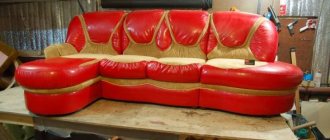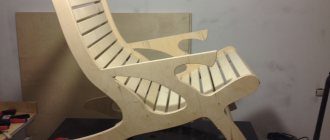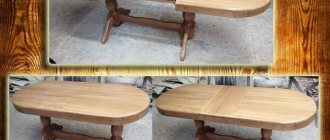Share on social media networks:
Different curtains are chosen for window frames. Recently, blinds have been considered fashionable, but roller blinds look much more attractive and more stylish. With their help you can adjust the lighting in the room. These curtains protect the room from the sun and give an original look to any room. Leroy Merlin sells a wide selection of unique products for different rooms. After purchasing, you need to assemble the roller blinds.
Nuances of fastening
To install curtains on wooden windows, only screws or self-tapping screws are used, and on aluminum windows it is preferable to use metal screws and blind rivets.
On wooden windows you can install curtains with plastic or aluminum guides on double-sided tape. Before installation, the adhesive tape must be completely removed, and the guides must be secured with screws. On aluminum windows it is advisable to use curtains without guides.
Installation tools
The set of tools is simple:
- Tape measure and pencil for marking.
- Battery-powered or mains-powered screwdriver.
- Drill for drilling holes.
- Screwdriver bit with Phillips head.
- Drills with a diameter of 1, 2 mm for wood, 2.5, 3.5 mm - for blind rivets.
- Riveter.
- A Phillips-head screwdriver if you don't have a screwdriver.
- Construction level 50 cm.
Installation of roller blinds
Guide to choosing and installing roller blinds on plastic windows
Instructions
More details
Repair of roller blinds
How to repair roller blinds yourself?
Instructions
More details
Removing roller blinds
How to remove roller blinds from a window, depending on the method of their fastening
Instructions
More details
Method without drilling
If you need to install blinds without the risk of damage, you should use the installation method without drilling. This option is considered the most harmless. In addition, it is quite simple and accessible, with the result that literally anyone has the ability to overcome the work, and it does not take much time.
Installation without drilling is carried out using a special construction adhesive or tape. Today, dozens of similar substances are presented for sale, differing in their own cost and characteristics. You need to stop getting cheap compounds and choose the best and most reliable type, which guarantees reliable fixation.
When choosing between tape and glue, they operate on their own individual preferences. As practice demonstrates, both substances are optimal provided that a high-quality base is chosen, which will have excellent adhesive properties. Installation in this case can be carried out either on the plane of the wall, ceiling or on the frame.
The choice of method depends on your decision, and also on the originality of the assembly and installation of the device. In each case, strengthening the substance without drilling with the support of high-quality construction adhesive or double-sided adhesive tape is the easiest, most reliable and fastest method.
Preparatory work and installation features
Before installing curtains on wooden windows, you need to do the following:
- Open all the doors.
- Wash the glass and remove dirt from the frame.
- Let the window dry.
- If there is damage to the paint, or the paint has peeled off, sand the surfaces and go over them with sandpaper.
- If necessary, you need to paint the frame. This especially applies to the side of the window where the curtains will hang.
- Proceed to marking the brackets or cassette.
Before installing curtains on aluminum windows, you must:
- Open all the sashes of a casement window or slide the sashes of a sliding window together.
- Wash the glass and aluminum surface of the frame with warm water and laundry soap.
- Dry the window.
- Proceed to marking the brackets or cassette.
Features of installing curtains on ordinary wooden windows
These windows have opening sashes and sashes with vents.
On all opening wooden doors you can install regular mini roller blinds with guides made of fishing line or cassettes with guides made of PVC profile. On opening sashes with vents, only cassettes with a leaf lock and PVC profile guides can be installed. Closing of such sashes with a cloth occurs from the bottom up. If it is necessary to open the window, the canvas is lowered down.
Determining the width of a roller blind with PVC guides on a wooden frame differs from the usual one. The guides cannot be attached to the glazing bead, therefore:
- curtain width = width of the visible part of the glass + two bead widths + 4 cm.
This rule applies to wooden windows with double-glazed windows.
Definition and calculation
The following procedures are performed:
- Find out the side to install the control chain. Make markings and attach the brackets to the frame.
More often, the mechanism is located on the side of the bracket with a hexagonal protrusion.
When it is known where the first bracket will be located, the locations for the holes are marked.
They can be drilled out with a thin drill. After installation, tighten the screws slightly, aligning the shaft horizontally using a building level. Measure points for the second bracket. Determine the midpoint of the window frame and mark it on the ceiling. In this case, a test square is used.
General procedure
On the sides, set aside from the middle sections equivalent to the length of half the frame. The thickness of the brackets is subtracted from the full width.
Usually it is about 0.2x0.4 cm. The required length of the shaft is sawed off. The excess is sawed off. A plug with a protrusion is installed on the shaft. The same length of the bottom rail is sawed off. Spread the canvas on a flat surface. Make markings along the bottom rail. The canvas is cut using a sharp knife or scissors.
How to assemble a curtain
Assembly with fishing line guides:
- Insert the sleeve with the chain mechanism and the support sleeve into the tube with the panel.
- Place inserts with fixed axles onto the brackets.
- Insert the assembled brackets into the support sleeve and into the sleeve with the chain mechanism.
- Insert decorative inserts into the brackets.
- Tie the guide line to the brackets.
- Thread the ends of the guide lines into the holes of the fabric weighting material.
Assembly components:
Assembling a “Mini” curtain without guides:
- Take a tube with a panel, insert a support sleeve and a sleeve with a chain mechanism into it.
- Place inserts with fixed axles onto the brackets.
- Insert the assembled brackets into the support sleeve and into the sleeve with the chain mechanism.
- Snap the decorative inserts onto the brackets.
- Place magnets on the fabric weighting material.
Sequencing
Roller blinds consist of many parts and you need to connect them correctly to hang the curtain. Some products are equipped with an additional fastening system used to open the window.
Step by step work process:
- First you need to assemble the bracket. To do this, you need to find the elements of its components.
- After this, you need to fix all the parts in the bracket until they click.
- Now apply double sided tape to the bracket area. When installing curtains with screw supports, this area is not covered.
- The fastener should be connected to the pads until it clicks if the device uses screws rather than tape.
- Now all that remains is to insert the shaft into the right bracket and secure the left one.
- Lower the roll and mark the location of the lock.
How to cut a curtain to width
This is not difficult to do. Required tools and materials:
- roulette;
- a simple pencil;
- flat bar 2 meters long;
- scissors;
- a strip of double-sided tape equal to the length of the curtain tube;
- a hacksaw or grinder with a cutting disc;
- drill with a 1.5 mm drill bit if necessary.
Operating procedure:
- Measure the length of the edges of the weighting material protruding from the canvas. Remove the weight.
- Unwind the fabric to the tube and remove it from the tube, removing the old tape.
- Measure the required width of the canvas from above and below with a simple pencil.
- Place a level bar along the marked marks and draw a solid line with a simple pencil.
- Trim off excess fabric with scissors.
- Mark on the tube a size equal to the width of the fabric plus 10 mm.
- Cut the tube.
- Cut the tape to a length equal to the width of the canvas.
- Remove one protective strip and stick the tape to the tube so that 5 mm of tape remains free at the edges.
- Remove the second protective strip and glue the sheet to the tube.
- Cut the weighting material wider than the canvas by the amount of the previously measured outlets.
- Drill the missing hole in the weighting material to allow the guide line to pass through.
- Insert the weighting material into the canvas.
Types and sizes of roller blinds
Manufacturers offer a huge range of roller blinds, from which you can choose products of any size and for any window. But still, sometimes situations happen that the line of roller blinds offered by the seller does not have the right size for your windows. This usually happens if the building design included windows of non-standard sizes or the size grid of the roller blinds you like is limited and does not contain a model suitable for you.
In this case, there are two ways out of the situation:
- Order individual tailoring of roller blinds. The most convenient solution to the problem. With minimal effort on your part and without any hassle, you will receive roller blinds that will fully meet your expectations and the dimensions of the window opening. But this method has a significant drawback - the high cost of the finished product.
- Buy a sun protection system that is as close as possible to the required size, but a little larger, and trim the roller blind yourself. If you decide to do this, you will need to make some effort and spend a little personal time, but the curtains will not cost you much.
The following types of roller blinds are available for sale:
Their feature is an open shaft, which is not protected by anything. Such roller blinds are inexpensive, take up little space, and can be mounted above the window opening or on each window sash. The maximum width of the canvas is 1.8 m, height - 2 m.
Roller blinds of this type are equipped with a plastic box that hides the rotating shaft and protects it and the wound fabric from dirt and accidental damage. Another difference is their small size. The width of the canvas starts from 0.7 m, while the length does not exceed 2.2 m.
These roller blinds are available in lengths up to 4.5 m and widths up to 3.5 m and are ideal for large window openings, such as panoramic windows or wide windows in office buildings.
Attic roller blinds are designed for installation on sloping windows. To ensure a tight fit to them, they are specially equipped with side guides that hold the canvas along the window sashes. Their height is no more than 2 m, width is no less than 0.7 m.
Installation on a wooden window
The installation procedure is slightly different from installation on a plastic window.
Mini curtains
Instructions:
- Try on the assembled curtain at its location on the window.
- Mark the mounting locations of the brackets with a simple pencil. Make sure that the roll is positioned strictly horizontally. To control the correct placement of the roll, you need to ask an assistant to pull out the canvas and check that the canvas overlaps evenly on the side slats of the sash.
- Remove the brackets from the bushings.
- Insert the fishing line guides into the holes in the brackets and tie the ends into a knot.
- Screw the brackets with 10 mm screws to the top wooden strip of the sash.
- Insert the curtain into the brackets and secure its position with decorative inserts.
- Stretch the curtain.
- Thread the fishing line through the holes in the fabric weighting material.
- Lower the panel to the very bottom.
- Mark with a pencil the correct position of the fishing line guides on the bottom bar of the sash by drawing a line.
- Screw the line tensioners to the bottom bar so that the inlet holes in the tension screws are located opposite the lines.
- Thread the fishing line through the holes in the tension screws.
- Using a flat blade screwdriver, turn the tension screws clockwise so that the free play of the line in the middle is no more than 1.5 cm.
Installing the cassette
Instructions:
- Mark the middle of the top edge of the wooden sash strip with a simple pencil.
- Mark the middle of the cassette with a simple pencil on the top of the casing.
- Place the cassette against the front edge of the top sash strip and align the lines marked on the cassette and the strip.
- Align the top edge of the cassette casing with the top edge of the sash strip.
- Screw a 10 mm long screw into the upper right hole of the cassette.
- Keeping the cassette horizontal, screw a second 10mm screw into the top left hole of the cassette.
- Screw two 10mm long screws into the bottom holes on the cassette.
- Prepare PVC guides for mounting with screws. Remove the double tape and clean the surface of glue. Drill three holes in each guide with a drill with a diameter of 1.5 mm (two at the edges, one in the middle). In the U-shaped guides, drill additional holes with a diameter of 6 mm to pass the tip of a Phillips screwdriver.
- Stretch the roll web.
- Attach an S-shaped guide to the edge of the canvas, inserting its upper end into the cassette. Attach a level to the bar. Align it vertically. Draw a line along the bar with a simple pencil. Remove level. Screw the strip with 10 mm screws from top to bottom along the drawn line. Repeat the same steps with the second guide.
- Installation of U-shaped guides is carried out in the same way. Before screwing them in, remove the weight strip from the canvas and twist the canvas completely into a roll to make room for screwing in the screws.
- Insert the bottom plugs into the guides.
- Check the operation of the curtains. Install blade limiters on the chain.











